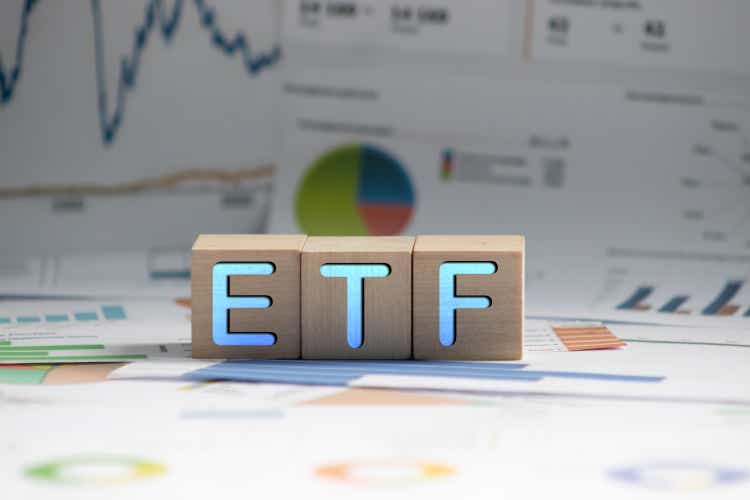There are many S&P 500 index funds on the market today but the SPDR S&P 500 ETF (SPY) was the first designed to track the S&P 500 index. In fact, SPY was the first exchange-traded fund of any kind to be listed on a U.S. stock exchange.

What Is the SPY ETF?
The SPDR S&P 500 ETF (SPY) is an exchange-traded fund that seeks to track the performance, before expenses, of the Standard & Poor's 500 Index, also known as the S&P 500. The SPY ETF is one of the most popular S&P 500 index funds traded on the market today.
How the SPY ETF Works
The SPDR ETF passively tracks the S&P 500 index, which represents roughly 500 of the largest U.S. publicly traded stocks, as measured by market capitalization. This provides SPY shareholders with a broadly diversified basket of large-cap U.S. stocks, spread across all 11 market sectors.
History of the SPY ETF
The SPY ETF was launched on January 22, 1993, making it the very first exchange-traded fund listed in the United States. Since inception, the SPY ETF's annualized return, through February 25, 2022, was 10.40%. This period includes three bear markets, three recessions, and the longest economic expansion in US history.
SPY ETF's Top Holdings
The SPY ETF's top holdings, which are the same top holdings as the S&P 500 index, include the largest publicly traded U.S. stocks, as measured by market capitalization. The top sectors in the SPY ETF by allocation weight, as of June, 2022, are technology at 25%, financials at 14%, and healthcare at 14%.
Here are the SPY ETF's top 10 holdings:
- Apple Inc. (AAPL)
- Microsoft Corp. (MSFT)
- Amazon.com, Inc. (AMZN)
- Alphabet Inc. A (GOOGL)
- Tesla, Inc. (TSLA)
- Alphabet Class C (GOOG)
- Meta Platforms, Inc (FB)
- NVIDIA Corp. (NVDA)
- Berkshire Hathaway Inc. Class B (BRK.A)
- Johnson & Johnson (JNJ)
Important: ETFs and mutual funds that track an underlying stock index are described as passively-managed funds because the fund manager does not use discretion in selecting the securities. Instead, the manager holds the securities in the index. Many index funds are cap-weighted, which means that the larger the capitalization of the stock in the index, the greater the allocation percentage it receives in the fund.
SPY ETF's Competitors
The main competitors for the SPY ETF are other large, low-cost, widely traded ETFs and mutual funds that track the S&P 500 index. Examples of SPY ETF's competitors, in terms of assets under management, include:
- iShares Core S&P 500 ETF (IVV)
- Vanguard 500 Index ETF (VOO)
- The mutual fund Vanguard 500 Index (VFIAX)
Should You Invest In the SPY ETF?
Deciding whether or not you should invest in the SPY ETF will depend upon a few important factors, such as your tolerance for risk and your personal investment goals. Although the SPY ETF is considered to be a diversified investment, the fund consists of 100% stocks, which means that shareholders may see price fluctuations and may see declines in value (investment losses).
For the latest fund statistics, see Seeking Alpha's quote page for SPY. Be aware that past performance is no guarantee of future results.
How To Invest in the SPY ETF
Investors can buy shares of the SPY ETF in the same way as buying stock. To invest in SPY:
- Open a trading account with a brokerage company, such as Charles Schwab, TD Ameritrade, or E*Trade.
- Once the account is open, fund the account with cash.
- Purchase shares of SPY through the brokerage platform.
Warning: This article is for educational purposes and does not represent a recommendation to buy a security. Invested capital in the SPY ETF is not guaranteed and any investment losses can be suffered.
FAQs
Through February 25, 2022, the 1-year return for SPY was 16.04%. For long-term reference, the 10-year total annualized return for SPY was 14.49%.
SPDR, pronounced "spider," stands for Standard & Poor's Depository Receipts. The SPDR ETF was the first ETF in the SPDR family of funds.
Since the SPY ETF is a stock fund, it shares similar risk characteristics to any stock investment. This means that SPY shareholders must be willing to accept the risk of a decline in the principal risk of their investment. While long-term annualized returns have averaged greater than 10% for the SPY ETF, short-term declines can exceed 20%.
Expenses for SPY are 0.0945%.
SPY is the largest ETF in the world with assets totaling $387.5 billion, as of February 24, 2022.
As of February 24, 2022, the trailing twelve month ((TTM)) yield for SPY is 1.31%. The 30-day SEC yield is 1.27%. To see the latest dividend yield, see Seeking Alpha's quote page for SPY.
SPY pays dividends on a quarterly basis and payments have historically been in March, June, September, and December.
